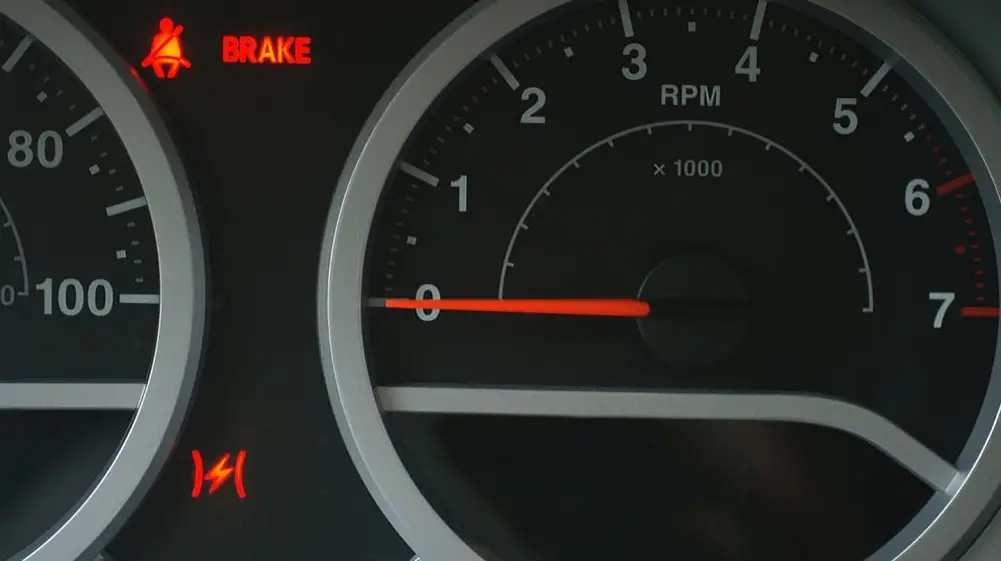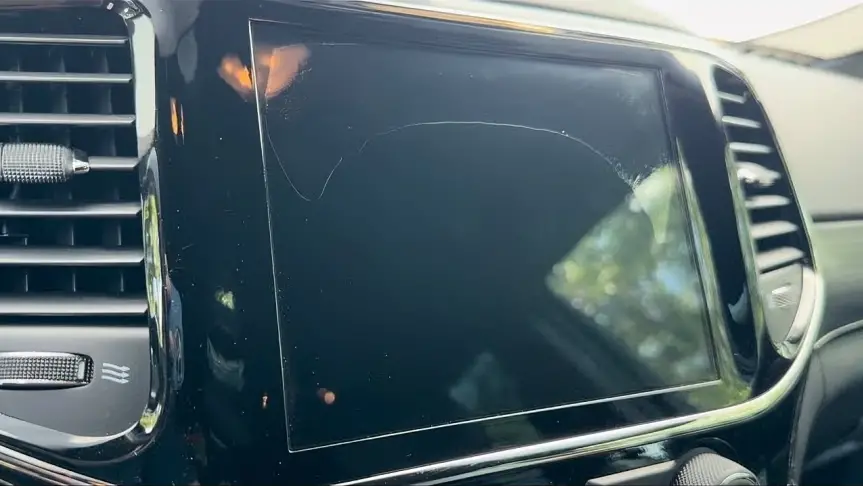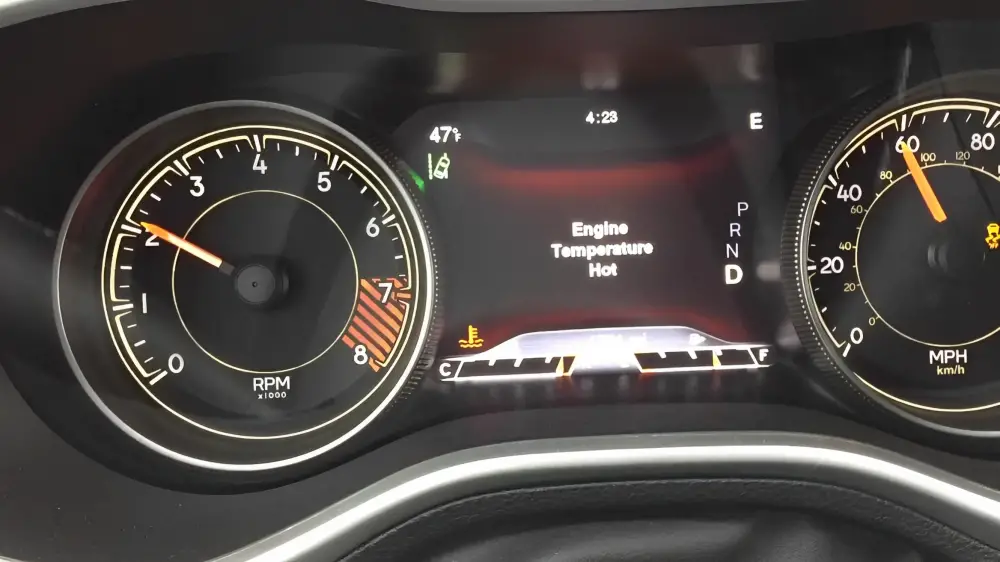You hop into your Jeep Cherokee, press the start button just like always, and nothing happens. The engine won’t turn over at all. Getting stranded because your vehicle won’t start is beyond frustrating.
But don’t panic. By methodically diagnosing the underlying issue, you can likely get your Cherokee back on the road fairly easily. The key to fixing a Jeep Cherokee won’t start push button issue lies in understanding the most common points of failure.
The most common issues causing a Jeep Cherokee not to start with the push button involve the key fob, brake sensor, wiring, or fuse box. By methodically diagnosing and troubleshooting each one, you can identify and fix the problem.
Let’s get into the details on how to find the root cause of the reasons why your Jeep Cherokee won’t start and how to resolve this issue!
Modern push-button start systems seem like magic – just hop in with the key fob and hit the button to fire up your Jeep.
However, several key components work together behind the scenes to enable this convenience. If any fail, it can lead to a no-start situation.
Four major issues tend to cause a Jeep Cherokee not to start with the push button:
1. Key Fob Malfunction
The wireless key fob is critical for the push button start system to activate the Cherokee’s starter. Weak batteries, damage, programming errors, or lost synchronization with the vehicle can all lead to non-functioning fobs.
2. Brake Pedal Sensor Issues
A sensor under the brake pedal must detect pressure to allow the push button to start as a safety precaution. If this sensor or its electrical connections fail, the system may not power on to start the engine.
3. Internal Wiring Problems
Various wires linking the fuse box, push button module, brake sensor, and powertrain control module must be intact for starter activation. Damaged wires or bad connections can disrupt communication and lead to no-start conditions.
4. Fuse Box Malfunction
Blown fuses or a damaged fuse box controlling key systems can knock out push button starter operation. Power fluctuations and electrical faults commonly impact the fuse box.
By understanding that it only takes one faulty component to make your Cherokee not start with the push button, you can zero in on specific system checks during troubleshooting.
When your Jeep Cherokee won’t start with the push button, methodically diagnosing the underlying problem is key.
By testing each critical system one by one, you can pinpoint what needs repairing.
1. Identifying Key Fob Malfunctions
Start the diagnosis by checking the key fob battery and function. Try pressing the unlock button – if it doesn’t work or shows low range, the battery may be dead.
Also, check for physical damage like cracks that could disrupt signals and synchronization.
2. Checking Brake Pedal Sensor Connections
Inspect the wiring harness connector at the brake pedal position sensor underneath the dash.
Wiggle it to check for loose pins that may interrupt the starter safety interlock signal. Scan for rubbing or damaged wires as well.
3. Inspecting Internal Wiring
Carefully examine all visible push button start system wires under the dash, at the fuse box, and leading to the powertrain control module.
Look for rubbing, bare spots, pinched sections, or corrosion that could cause communication errors.
4. Examining the Fuse Box
Pull out each fuse related to the ignition system and push button module to check for blown units.
Also scan the fuse box, wiring, and connections for signs of melting, arcing damage, or loose terminals.
When your Jeep Grand Cherokee won’t start, pushing the button, methodically troubleshooting the underlying problem is crucial to getting back on the road.
By testing each related system, you can isolate the specific fault. Let’s discuss all four parts individually and look at the troubleshooting steps:
1. Replacing Key Fob Batteries
The key fob is the first thing to check, as battery or synchronization problems can prevent proper communication with the vehicle.
- Check for warning messages indicating fob synchronization problems
- Try pressing buttons to test for non-functioning controls
- Replace the battery and resync if the fob is non-responsive
- Inspect for physical damage to the fob casing or internal circuit boards
If the fob diagnostics reveal a weak battery, replace it with a fresh CR2032 coin cell. [Consider purchasing a multi-pack of long-life CR2032 batteries on Amazon to always have spares ready.]
2. Repairing or Replacing Brake Pedal Sensors
The brake pedal sensor and connector at the base of the dashboard can fail over time, disrupting the required input to enable starting.
- Wiggle the connector harness to check for loose wiring pins
- Test the sensor function by pressing the pedal repeatedly to check for intermittent operation
- Scan wires for signs of rubbing, bare spots, or cuts
- Replace the sensor if determined to be faulty
Fix any identified loose wires or harness connectors related to the brake pedal sensor. If damage is noted, the sensor assembly may need replacement.
3. Fixing Internal Wiring Issues
Various wires linking the push button and ignition components can deteriorate, interrupting critical communication signals.
- Visually inspect wires and connectors for the push button, ignition switch, and control modules
- Look for rubbing spots, melting, crimping, corrosion, or other degradation
- Shake connectors to identify loose plugs prone to intermittent contacts
- Repair wires using splices or replacements as necessary
4. Replacing Blown Fuses or Malfunctioning Fuse Boxes
Electrical overloads can lead to blown fuses or damaged fuse box components that disable start functions.
- Remove related fuses one by one to check for blown elements
- Check for signs of arcing, overheating, or melting damage inside the fuse box
- Ensure fuse box terminals and connections are corrosion-free and tight
- Replace any degraded fuses, relays, or fuse box assemblies
By systematically diagnosing and then troubleshooting, you can resolve the specific issue causing your Jeep Cherokee to not start with the push button. Take it step-by-step for smooth operation.
While troubleshooting and repairing issues are important when your Jeep Cherokee won’t start with the push button, prevention is equally vital.

Performing consistent inspections and maintenance of all push-button start system components can help avoid many no-start headaches down the road.
Follow this comprehensive preventive maintenance plan to maximize the reliability of your Cherokee’s push-button starting function.
1. Key Fob Maintenance
The wireless key fob is the gateway to activating the push button start, so keeping it in top shape is critical:
- Check Fob Battery Every 3 Months: Press the lock/unlock buttons and inspect indicator lights for fast response. Have CR2032 coin cell batteries on hand for immediate replacement when weak signals occur.
- Examine the Fob Body for Damage Twice Yearly: Scan for cracks or separation that could admit moisture and damaged circuits. Also, check that the emergency key still removes/inserts smoothly.
- Clean Fob Contacts Annually: Use a pencil eraser to remove grime/corrosion from electrical contact points gently. Compressed air can dislodge trapped debris.
2. Brake Pedal Sensor Inspections
The brake pedal position sensor and connector at the base of the dash can deteriorate over time. Here’s how to keep this system in top shape:
- Check Connector Integrity Yearly: Tug the wiring harness lightly to check for loose pins, indicating worn retention clips. Replace clips or the full connector assembly as required.
- Inspect Sensor Function Every 6 Months: Press the pedal repeatedly while monitoring for intermittent start button operation, indicating sensor issues. Replace faulty sensors immediately.
- Verify Wiring Annually: Run hands along the length of wires, checking for rubbing spots, tears, crimps, or cuts in insulation that could cause electrical shorts. Repair or wrap any compromised sections.
3. Internal Wiring & Connections Checks
It’s vital to monitor all the wiring linking various push-button start components under the dash and hood. Follow this routine:
- Inspect for Damage Yearly: Closely examine wires and connectors related to all push button and ignition switch control modules for melting, cuts, crimps, or corrosion. Repair or replace degraded wiring.
- Ensure Secure Connections Annually: Check all visible push button system connectors by gently wiggling plugs in their sockets to identify loose units prone to intermittent contact. Reseat connections.
4. Electrical System & Fuse Panel Monitoring
Electrical faults or overloads can lead to blown fuses or damaged fuse box components that can disable push-button starting. Here are useful preventive checks:
- Record Fuse Panel Appearances Biannually: Take photos of the fuse/relay box interior for comparison to catch melting/charring issues early.
- Confirm Fuse Integrity Yearly: Remove each fuse related to ignition, push button, and security modules to check for intact elements. Replace any degraded fuses.
By consistently following this comprehensive preventive maintenance plan for your Jeep Cherokee’s push-button start system, you can help avoid inconvenient no-start situations in years to come.
Conclusion
When you face the Jeep Cherokee won’t start push button issue, avoiding random guessing is key.
Follow a logical diagnostic process focused on the four common issues – key fob, brake sensor, wiring, and fuses. Methodically test each system to pinpoint the specific fault in your vehicle.
Address any issues discovered during troubleshooting, like dead fob batteries, sensor problems, damaged wires, or bad fuses.
Methodical troubleshooting and repair of these systems will get your Cherokee started again.
Last update on 2025-12-10 / Affiliate links / Images from Amazon Product Advertising API




